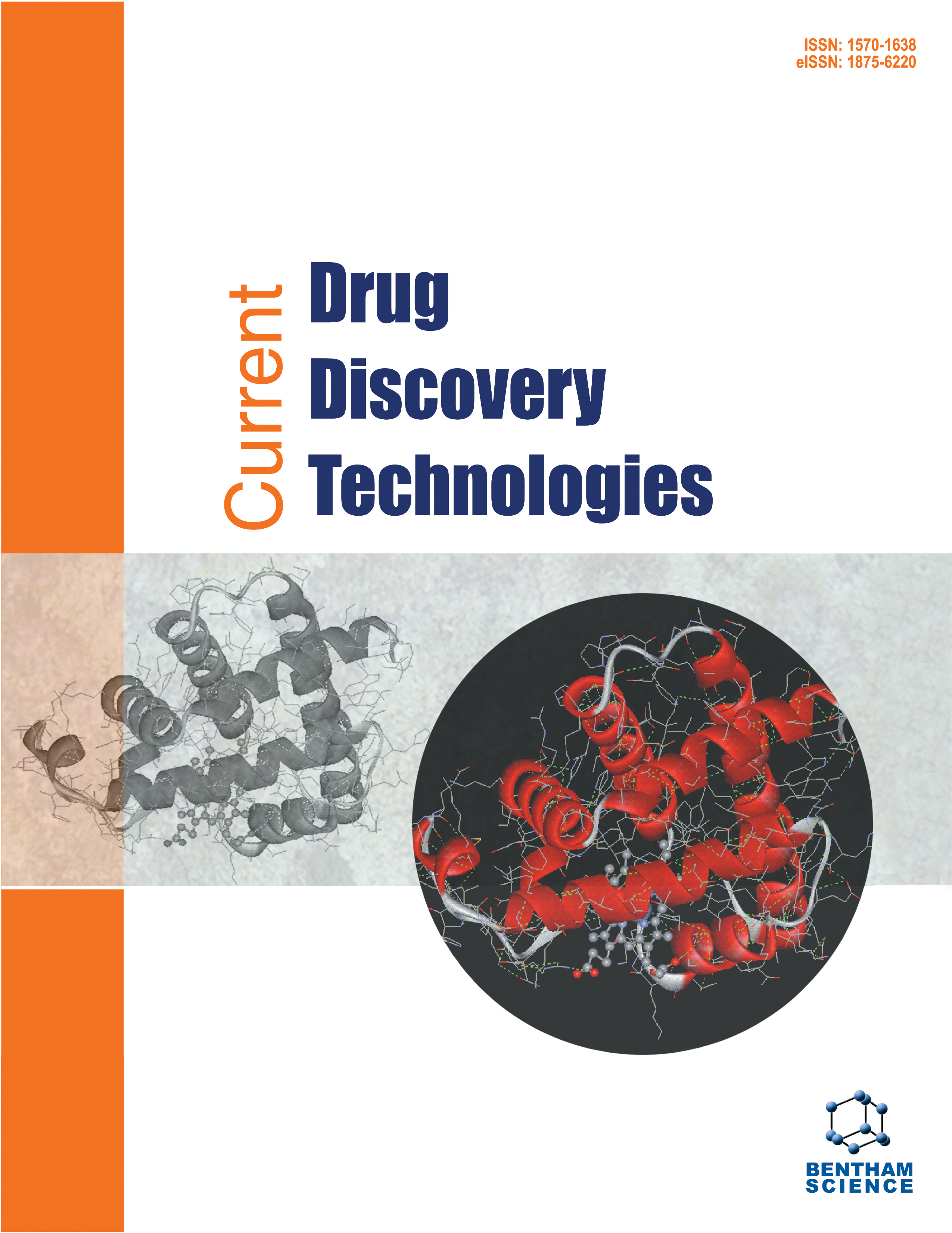- Home
- A-Z Publications
- Current Drug Discovery Technologies
- Previous Issues
- Volume 10, Issue 2, 2013
Current Drug Discovery Technologies - Volume 10, Issue 2, 2013
Volume 10, Issue 2, 2013
-
-
Adopting Network Pharmacology for Cancer Drug Discovery
More LessCancer is a deadly disease and a huge burden to the society. Although the last 60 years has seen improvements in cancer diagnostics, treatment strategies against most of the complex malignancies have not lived up to the mark. In the drug discovery area, the attrition rates have spiraled out of control, indicating that there is certainly something amiss employing the current research approaches against cancer. Advances in co Read More
-
-
-
Drugs and their Interactions
More LessBy Murat CokolSmall molecules with selective efficacy can be used as drugs. Drugs typically have a therapeutic dose range where the benefit from intended effects outweighs the cost of unintended (side) effects. Herein, I use case scenarios to illustrate potential advantages and pitfalls of treatment with drugs alone or in combination. Combinations of drugs may show surprising effects given the effects of individual drugs, in phenomena k Read More
-
-
-
A Brief Survey on Computational Approaches to Reveal Drug and Disease Associations
More LessAuthors: Hsiang-Yuan Yeh, Wei-Chih Lin, Yu-Fen Huang and Von-Wun SooPeople worldwide are still threatened by various complex disease phenotypes, especially cancer which is usually caused by the accumulation of multi-factor-driven alterations. Although drugs achieve the therapeutic functions by targeting particular molecular, the therapies used nowadays against diseases are not effective enough due to the limitation of the knowledge about the drug-disease associations. The rapid increasi Read More
-
-
-
Network Pharmacology of Glioblastoma
More LessWith increasing knowledge of cellular networks of gene and molecular interactions, and their alterations in GBM (glioblastoma multiforme), it is now possible to apply methods of Network Pharmacology (NP) to predict candidate drug targets for this malignant brain tumor. NP requires the development of mathematical methods for network stability and perturbation analysis to identify sensitive and druggable network comp Read More
-
-
-
Systems Biology Approaches in Identifying the Targets of Natural Compounds for Cancer Therapy
More LessAuthors: Yi Tan, Qiong Wu, Jun Xia, Lucio Miele, Fazlul H Sarkar and Zhiwei WangNatural compounds have been known to exert inhibitory effects on the development and progression of human cancers. However, the targets of these naturally occurring agents are largely elusive. Recently, systems biology approaches based on high-throughput technologies such as DNA microarrays have begun to be utilized for investigating the targets of drugs including natural compounds. Therefore, in this review articl Read More
-
-
-
Network Insights into the Genes Regulated by Hepatocyte Nuclear Factor 4 in Response to Drug Induced Perturbations: A Review
More LessAuthors: Asfar S. Azmi, Ginny W. Bao, Jiankun Gao, Ramzi M. Mohammad and Fazlul H. SarkarTranscription factors (TFs) play central role in normal cellular physiology and their aberrant expression is linked to different diseases. Hepatocyte Nuclear Factors (HNFs) are TFs that have been recognized to play multiple roles in liver physiology. Emerging research has highlighted their function in the sustenance of solid tumors, indicating that HNFs could serve as possible therapeutic targets in cancer. Although, there have been Read More
-
-
-
Network Pharmacology: Reigning in Drug Attrition?
More LessAuthors: Osama M. Alian, Minjel Shah, Momin Mohammad and Ramzi M. MohammadIn the process of drug development, there has been an exceptionally high attrition rate in oncological compounds entering late phases of testing. This has seen a concurrent reduction in approved NCEs (new chemical entities) reaching patients. Network pharmacology has become a valuable tool in understanding the fine details of drug-target interactions as well as painting a more practical picture of phenotype relationships t Read More
-
-
-
Fluorescein Fluorescence Use in the Management of Intracranial Neoplastic and Vascular Lesions: A Review and Report of a New Technique
More LessAuthors: Brandon C. Lane and Aaron A. Cohen-GadolThe use of fluorescent technologies in neurosurgery has a substantial history with applications to vascular and tumor surgery dating back to the 1940s. This review focuses on the applications of fluorescence imaging to intracranial vascular and neoplastic lesions using sodium fluorescein. The authors performed a literature search for articles about the use of sodium fluorescein in neurosurgery. Fifty-five articles were initially ret Read More
-
-
-
Treatment of Lung Cancer Using Nanoparticle Drug Delivery Systems
More LessAuthors: Vijay Chandolu and Crispin R. DassContext: One of the leading causes of cancer-associated deaths in most men and women in the Western world is lung cancer. There are various types of treatments depending on the type and the stage of the cancer. A recent type of therapy is targeted gene therapy which aims to target genes that cause lung cancer. However, this therapy has some drawbacks including lack of proper vectors for delivery. These drawback Read More
-
Volumes & issues
-
Volume 22 (2025)
-
Volume 21 (2024)
-
Volume 20 (2023)
-
Volume 19 (2022)
-
Volume 18 (2021)
-
Volume 17 (2020)
-
Volume 16 (2019)
-
Volume 15 (2018)
-
Volume 14 (2017)
-
Volume 13 (2016)
-
Volume 12 (2015)
-
Volume 11 (2014)
-
Volume 10 (2013)
-
Volume 9 (2012)
-
Volume 8 (2011)
-
Volume 7 (2010)
-
Volume 6 (2009)
-
Volume 5 (2008)
-
Volume 4 (2007)
-
Volume 3 (2006)
-
Volume 2 (2005)
-
Volume 1 (2004)
Most Read This Month
Article
content/journals/cddt
Journal
10
5
false
en


